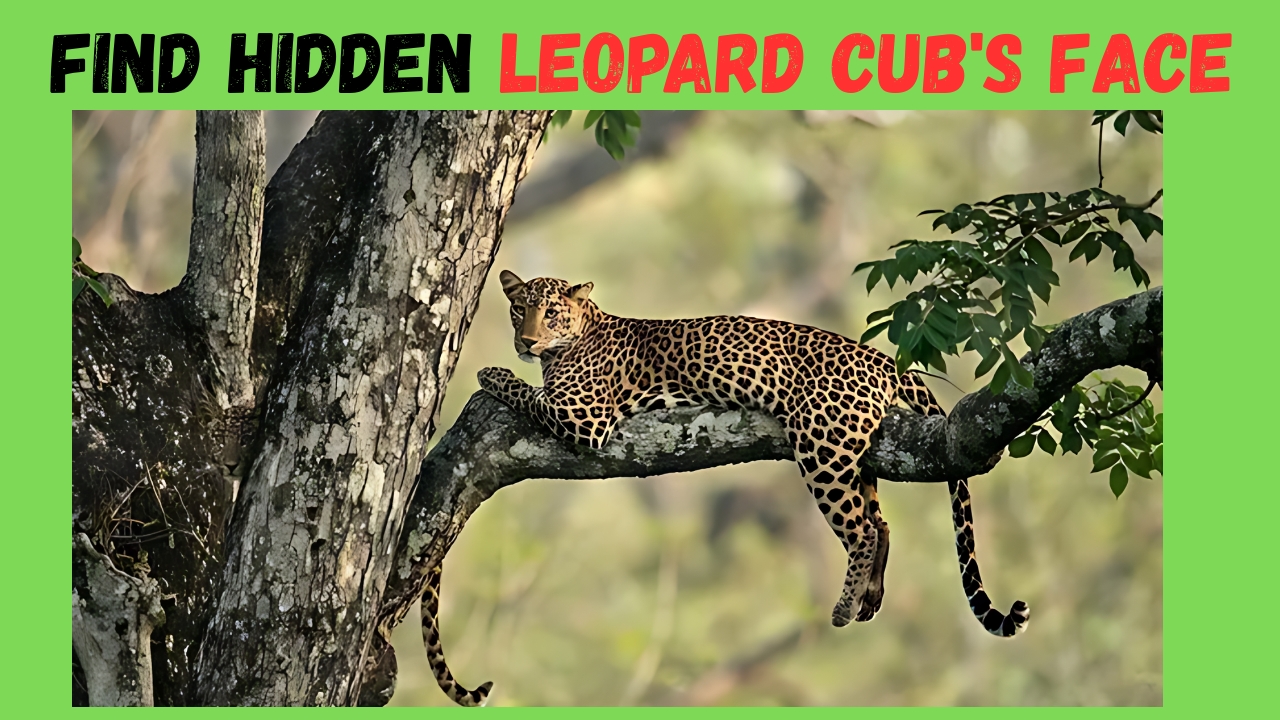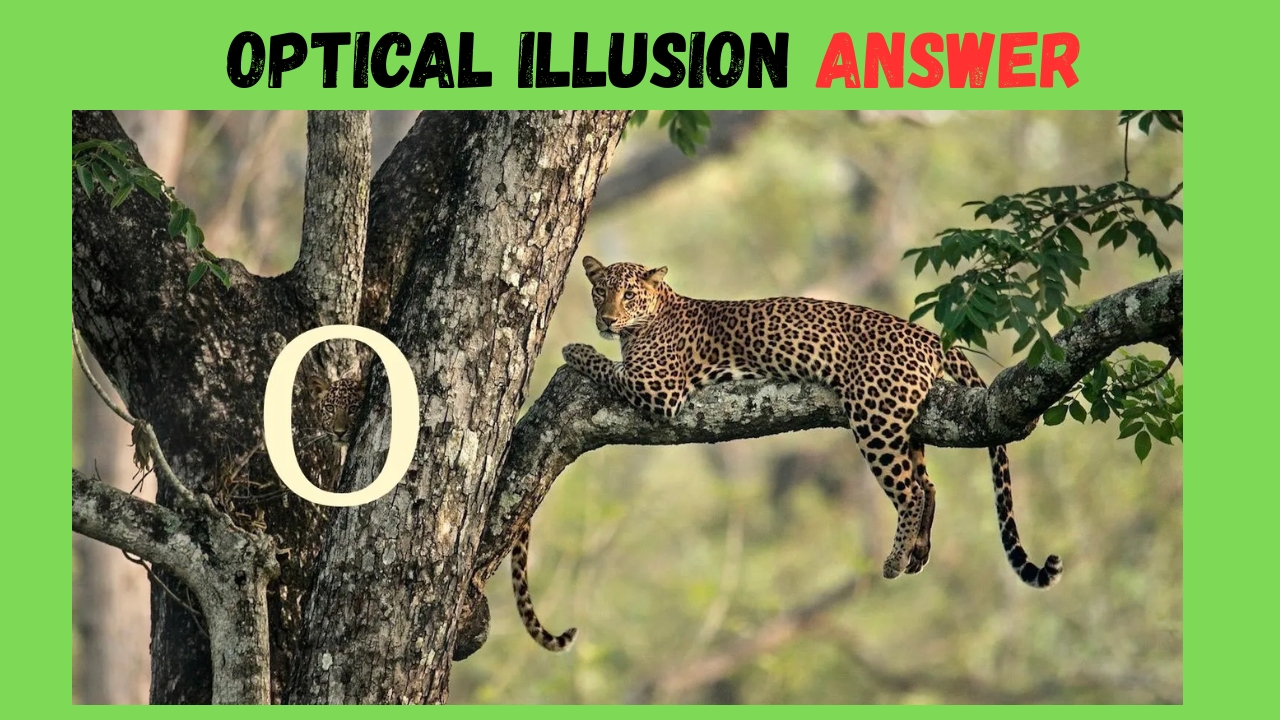Leopard : Have you ever stared at a seemingly ordinary landscape photo, only to suddenly gasp when a pair of eyes seems to materialize from nowhere? Welcome to the captivating world of hidden animal optical illusions, where leopards and their cubs demonstrate nature’s most spectacular magic trick right before our eyes.
Understanding the Science Behind the Spectacle

When you encounter an image containing a hidden leopard cub, your brain launches into an incredible juggling act. Multiple cognitive processes fire simultaneously – pattern recognition systems scan for familiar shapes, spatial awareness centers map distances and depth, while attention networks decide where to focus your precious mental energy.
Think of your visual system as having different specialized teams working in parallel. Some neurons focus exclusively on detecting edges and boundaries, others specialize in tracking movement, while still others analyze colors and textures. When a leopard is expertly camouflaged within a scene, these various processing teams can become confused, creating the perfect storm for an optical illusion.
The magic happens during what scientists call the “integration process” – the moment when your brain attempts to combine all these competing visual signals into one coherent picture. This integration process reveals fascinating individual differences in how we perceive our world.
Nature’s Master Class in Evolutionary Design
Leopards didn’t become masters of disguise by accident. Their distinctive rosette patterns represent millions of years of evolutionary refinement, creating what experts call “disruptive coloration.” These spots break up the animal’s outline, making it nearly impossible to distinguish where the leopard ends and the environment begins.
When dappled sunlight filters through forest canopy or creates shadows among rocky terrain, leopard markings blend seamlessly with these natural light patterns. The rosettes create visual disruption that confuses predators and prey alike, turning a 150-pound predator into an invisible ghost.
Understanding this natural camouflage helps explain why finding hidden leopards in images feels so challenging. Your eyes aren’t failing you – you’re experiencing the same confusion that has kept these big cats alive and hunting successfully for millennia.
Why Some People Excel at These Visual Puzzles
Research reveals fascinating insights about who tends to excel at spotting hidden animals in optical illusions. Pet lovers and animal enthusiasts often demonstrate remarkable proficiency in these challenges, but this isn’t just coincidence.
Daily interactions with animals fine-tune specific observational skills. Pet owners develop heightened sensitivity to subtle body language cues, movement patterns, and the tiny details that signal an animal’s presence or mood. These skills transfer beautifully to visual puzzle solving.
Additionally, people who spend time in nature – hikers, wildlife photographers, birdwatchers – often possess what researchers call “educated attention.” They’ve internalized knowledge about animal behavior and habitat preferences, allowing them to focus their search efforts more strategically.
Some individuals naturally process visual information by breaking scenes into component parts, making them naturally gifted at finding hidden elements. Others tend to view scenes as cohesive wholes, which can make detail detection more challenging but offers advantages in other areas of perception.
Practical Strategies for Improving Your Detection Skills
Finding hidden leopards becomes easier when you understand what to look for and where to focus your attention. Start by training your eye to recognize the fundamental patterns that characterize these big cats – rosette shapes, distinctive body proportions, and the characteristic curve of a feline silhouette.
Pay special attention to areas where lighting creates natural shadows and texture variations. Leopards often position themselves where their spotted patterns blend with dappled light filtering through vegetation or the irregular shadows cast by rocky terrain.
Develop the habit of questioning what appears natural in an image. Often, what seems like ordinary shadowing actually conceals the outline of a hidden animal. Train yourself to look for subtle inconsistencies – edges that don’t quite follow natural lines, patterns that seem slightly too regular, or textures that don’t match their surroundings.
Remember that hidden animals frequently reveal themselves through their most recognizable features. Eyes, ears, and facial features often remain visible even when the body is perfectly camouflaged. Focus your initial search on these distinctive markers.
The Psychology Behind the Challenge
These optical illusions tap into deep-seated evolutionary programming that once meant the difference between life and death for our ancestors. The ability to quickly detect camouflaged predators or hidden prey represented crucial survival skills that natural selection strongly favored.
When you successfully spot a hidden leopard in an image, your brain releases a small reward of satisfaction and accomplishment. This positive reinforcement explains why these visual puzzles become addictive – your mind craves the pleasure of solving these ancestral challenges.
The difficulty level varies significantly between individuals due to differences in visual processing styles, attention patterns, and previous experience with similar challenges. Some people naturally excel at detail-oriented tasks, while others perform better with big-picture analysis.
Benefits Beyond Entertainment
Regular engagement with optical illusions and visual puzzles may offer genuine cognitive benefits. These challenges exercise the neural pathways responsible for attention, pattern recognition, and visual processing – skills that remain important in our modern world.
Wildlife researchers and conservationists use similar principles when training field workers to spot endangered species in their natural habitats. Understanding why some individuals excel at these tasks helps develop better training protocols for conservation professionals.
The same visual skills that help you find hidden leopards can improve performance in many daily activities – from noticing important details in work presentations to spotting potential hazards while driving.
Optical Illusion Answer

Approach these optical illusions with patience and curiosity rather than frustration. Remember that difficulty finding hidden animals reflects the incredible effectiveness of natural camouflage rather than any shortcoming in your observational abilities.
Try varying your approach when stuck on a particularly challenging image. Sometimes stepping back from the screen or adjusting lighting conditions can reveal details that weren’t immediately apparent. Take breaks if your eyes become tired – fresh perspective often leads to breakthrough moments.
Consider timing yourself on easier puzzles to build confidence before tackling more difficult challenges. Like any skill, visual detection improves with practice and positive reinforcement.
These fascinating optical illusions remind us that perception involves much more than simply opening our eyes. They reveal the incredible complexity of human visual processing while celebrating nature’s most spectacular examples of evolutionary artistry. Whether you spot the hidden leopard cub in seconds or need several minutes of careful searching, you’re participating in an ancient game that connects us to both our evolutionary heritage and the remarkable animals we share this planet with.